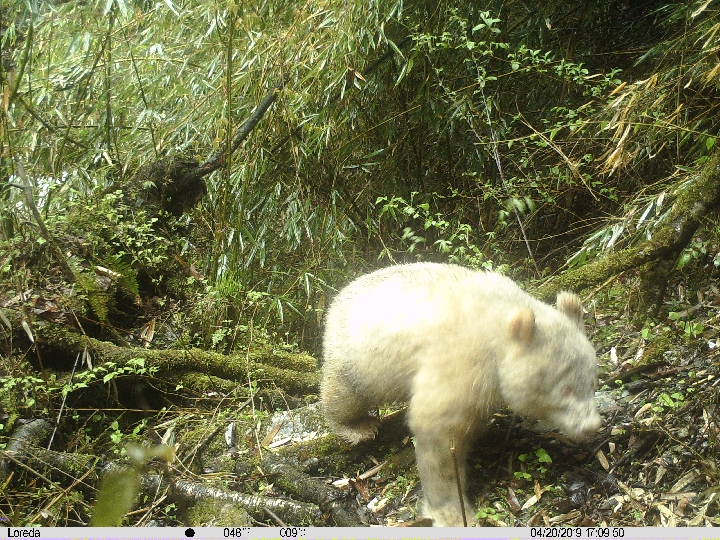
Infrared camera image taken on April 20, 2019 shows an all-white giant panda in the Wolong National Nature Reserve in southwest China's Sichuan Province. (Xinhua)
Editor's notes: Thinking about China, images of the Great Wall and giant pandas quickly come to mind, but the country is far more than that. With a vast territory and long history, it boasts a diverse natural and cultural landscape as well as a robust economy. "Discover China" offers a window to discover China's uniqueness and complexity as it undergoes great changes.
CHENGDU, May 30 (Xinhua) -- Attempting to find the mother of a newly-spotted all-white panda, Chinese researchers have set up more infrared cameras at the Wolong National Nature Reserve.
A rare all-white panda was captured in mid-April by an infrared camera about 2,000 meters above sea level at the reserve in southwest China's Sichuan Province. The red-eyed quadruped, taking firm steps with its white paws in a forest, is believed to be an albino between one and two years old.
Zhang Hemin, a researcher of the China Conservation and Research Center for the Giant Panda, said based on the living habit of pandas, the mother could be in the area taking care of the white panda.
Staff have been sent out to set up more infrared cameras in the area, in an effort to take a closer look at the panda and hopefully spot the mother, said Duan Zhaogang, Party secretary of the reserve administration.
The reserve looks to pay a long-term attention to the growth, activities and social relationships of this individual panda. It will be more valuable for further research if images of its mother and babies are caught, Duan added.
According to panda experts, albinism exists in different vertebrate species. Albinism usually does not affect an animal's physical makeup and functions, but can make it easier to be discovered and more sensitive to sunlight.
The albino mutation is cause by a recessive gene. Only when the parent pandas both carry such gene, can the baby show albino traits.
The Wolong nature reserve has been using infrared cameras to monitor the distribution and activities of wild animals in its seven demonstration areas, each covering an area of 20 square km.
Previously, some rare brown giant pandas were found in China's Qinling Mountains. The brown fur color was also caused by a genetic mutation according to researchers. Enditem



